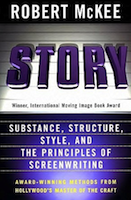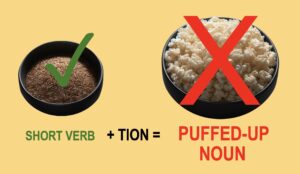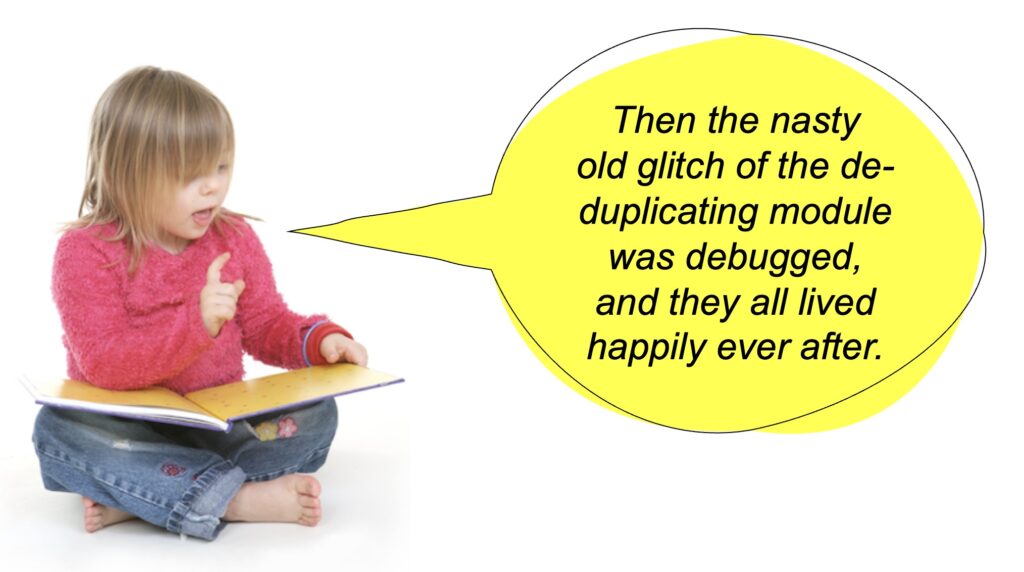
How to tell a story
Every child knows what a story is.
We’ve all been hearing stories since before we could walk.
Marketing gurus constantly tell us to use stories to engage prospects.
For sure, any case study or problem/solution white paper must tell a compelling story.
But have you ever stopped to ask what “a story” really is?
Any fiction writer can give you an answer
They might say a story is about people in a place with a problem.
And we must care about those people and how they deal with that problem.
For their part, an English teacher might say a story has characters, setting, and conflict.
(Just another way of saying “people in a place with the problem.”)
Of course, a good story in not predictable. It must have some dramatic twists and turns to make us wonder how it will turn out in the end.
And any story has a beginning, a middle, and an end.
Beyond that, stories come in all shapes, sizes, genres, and media.
People all over the world need stories
Robert McKee is a screenwriter who has studied and taught about storytelling for many years.
I was delighted to attend his three-day workshop in Montreal a few years ago.
McKee says the desire for stories is not culturally determined.
And this desire is not confined to any time in history, any part of the earth, or any one race or people or creed.
He says something in the human mind seeks out stories.
In fact, we all need stories to help make sense of our experiences in this world.
We need stories to pass along cultural insights and to stay safe from danger.
But how can knowing this help anyone write a good case study or white paper?
How to use story elements in a case study
A case study is a story that describes specific people in a specific place (company) with a specific problem.
Most case studies follow a Before/After format:
- Before, the people in a company had a terrible problem
- After, the problem was solved and everyone was happy
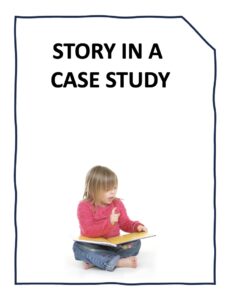
In a case study, your challenge is to find the story and bring it to life with details about the people, place, and problem.
People: Most of us are interested in other people, especially people we have something in common with.
The people in a case study work at your client’s client. They are the people you interview to get the story.
If you can’t mention the names of the people and the company, your case study has no people.
That makes the story harder to believe.
Place: The industry, sector, market space, or location where the people work and the problem occurs.
Setting adds realism and specific details that make a case study come alive.
If you can recreate a scene in your case study with a person at work, that helps make it more realistic
If you can’t mention the company and its location, your case study has no setting. That makes the story harder to believe.
Problem: A tough problem the people faced and solved.
If you can’t mention the problem, you have no story at all.
How to use story elements in a problem/solution white paper
Remember, a “problem/solution” white paper describes how many business people in a certain industry suffer from a nagging problem.
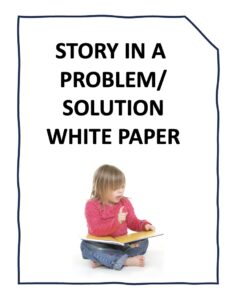
People: Everyone suffering across an industry from the same problem.
Place: The industry, sector, market space, or location where the problem occurs.
Setting adds realism and specific details that make the story come alive.
Problem: Some nagging industry-wide issue that everyone in a certain industry faces and no one has ever managed to completely overcome.
The bad guy and the good guy in B2B content
You might think the bad guy is your client’s main competitor. Sounds logical, right? But that’s wrong.
The bad guy is the problem everyone in your case study or white paper is trying to beat.
The competition is all the people who have tried—and failed—to beat the problem.
Those are all the other knights, brave and strong, who tried to slay the dragon but got burned to a crisp.
In other words, many lesser heroes throw themselves at the problem using ineffective technologies, inadequate plans, and limited ideas.
But the problem beats them all.
The good guy: Then who’s the hero? Not your company.
The real hero is the new and improved solution that your white paper proposes and your case study shows in action.
The good guy uses something that’s never been tried before: a new technology, a thoughtful plan, or an imaginative idea that truly vanquishes the problem.
A story is NOT a sales pitch

Thinking about story helps illuminate the difference between a piece of B2B content and a sales pitch.
A case study shows an actual customer success.
A problem/solution white paper sketches out a big problem and a new solution that works better than anything else that’s ever been tried.
Either type of content must show how big the challenge is, and what a tough thing it is to deal with.
A sales pitch simply skips around the drama, lands right at the ending, and shouts, “Hey, we’re the hero!”
Is it any wonder that most sales pitches fall flat?
They ignore all the basic tenets of storytelling!
A sales pitch is all about how great we are, how wonderful our product is… instead of talking about people in a place with a problem.
Try using the traditional elements of a story to help structure your next case study or white paper, and see how it becomes more engaging.
It may take a little practice, but storytelling is a powerful device to use in your content. After all, we all know what a story is.
Originally published June 2014. Last updated May 17, 2023.
Want to see more thought-provoking articles like this? Subscribe here for my free newsletter.

